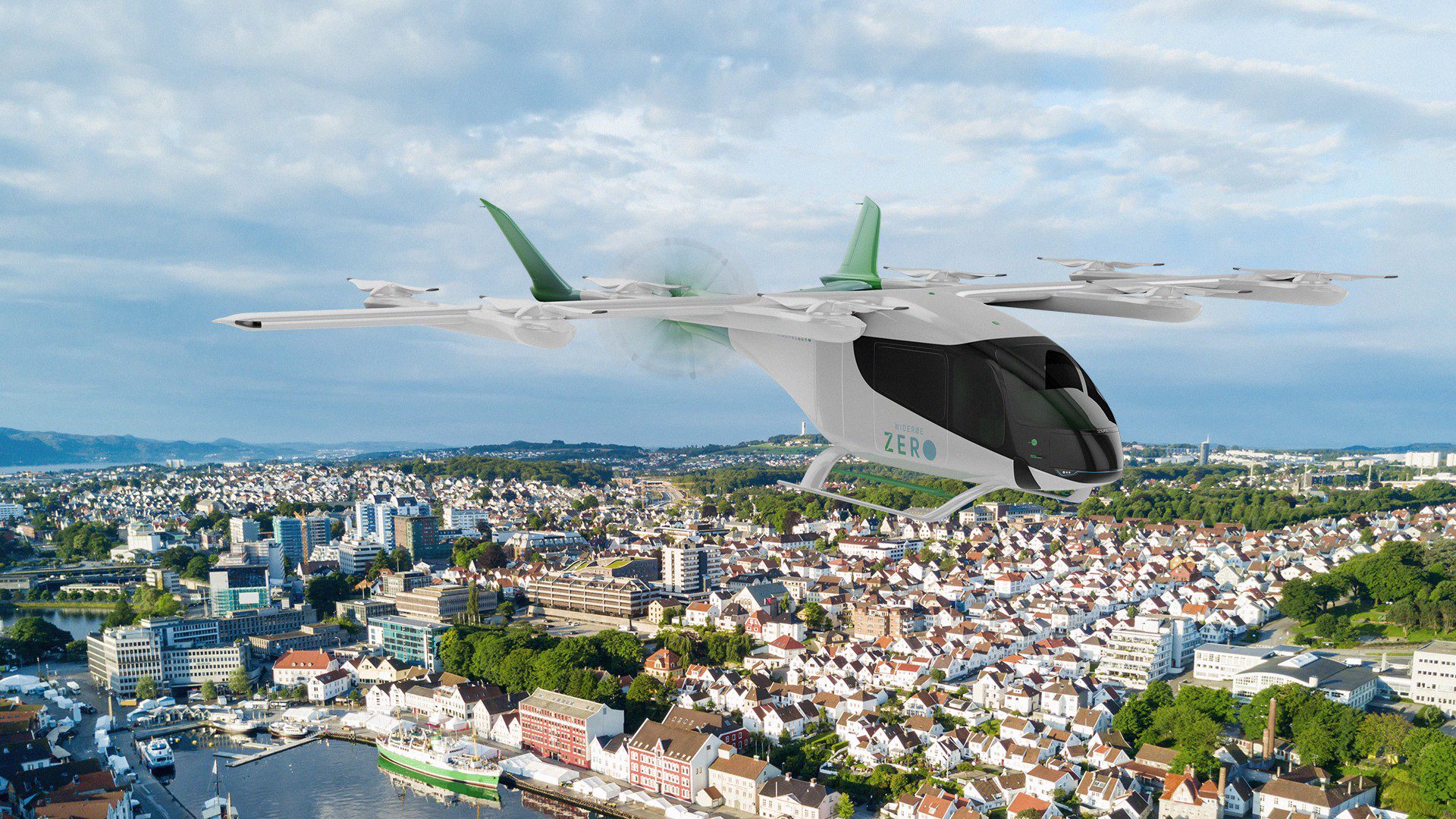
Eve Wideroe eVTOL
Norwegian regional carrier Wideroe caused some surprise by announcing a Letter of Intent for fifty Eve Air Mobility eVTOLs at the Paris Airshow. Although the airline has a Memorandum of Understanding with Eve to develop eVTOL operations in Scandinavia since 2021, its intention to operate fifty of them in remote and uninhabited areas of Norway seems strange. But it could make a lot of sense, says Wideroe’s CEO Andreas Aks. Wideroe wants to do Rural Air Mobility with Eve in Norway.
“Our operations will be different from how eVTOLs will be used in other regions. What we are planning to do is look at how eVTOLs can expand the short take-off and landing operations we have today,” says Aks.
“As a regional operator, we are operating in and out of 45 small airfields. But beyond this network, we believe there is a potential to expand and create more mobility for all the islands in Norway. The coast of Norway is full of islands, where you have different societies. With a combination of conventional aircraft and eVTOLs, we could expand this and bring much more efficient mobility between the islands. So this is very different to urban air mobility, it is more about rural air mobility.”
The LOI also includes implementing Eve’s Urban ATM software to optimize Wideroe’s UAM operations, as the software will help to integrate the use of eVTOLs with that of other airspace users in low-level airspace. The extended partnership also covers Air Mobility Labs project across Norway with new AAM solutions, just as Andreas Aks mentioned. No timeline was given for when Wideroe plans to induct the Eve aircraft.
A partner of Embraer Energia
Wideroe has been partnering with Eve’s parent Embraer for some time. It was the launch operator of the E190-E2 and flies the aircraft on its domestic and European network. The airline has also had a keen interest in Embraer’s Energia project which looks at electric and hybrid-electric aircraft for up to thirty passengers. At the 2022 Farnborough Airshow, Wideroe said it had joined the Energia Advisory Group of airlines that work with Embraer on the net zero aircraft projects.
Energia and Eve are complimentary, says Andreas Aks. “In Norway and I guess in Europe in general, the focus on sustainability is huge. There is a massive push towards decarbonization. So we are also looking at how we could replace the existing fleet of Dash 8 aircraft with a new aircraft type. For instance, Energia with a hybrid-electric propulsion system where we reduce emissions to net zero. So we are looking at replacements for the existing fleet, but also whether eVTOLs could expand the network we have today. It is a plus-plus.”
This doesn’t mean that Wideroe is only looking at Embraer. Andreas Aks was seen at the Eviation stand in Paris, but he was only smiling when asked if this meant his airline could also purchase the Alice nine-seater all-electric aircraft in the future.
Tecnam’s postponement
The airline had planned to operate the Tecnam P-Volt in 2026 and worked together with the airframer and Rolls-Royce to develop the aircraft and operations. But then Tecnam said just before the Paris Airshow that it would postpone the development of the aircraft. The Italian airframer thinks that the business case for the nine-seater isn’t going to work with the current battery technology.
“What has been said by Eve and others is that battery capacity, in the beginning, will be limited. It may work for eVTOLs and small commuters. It was Tecnam’s decision to pull out of the P-Volt concept. The range would be limited. Even if we could make it work on certain routes, the commercial viability in the early phase wouldn’t be there. So then it is better to wait,” says Aks.
Does this mean that Wideroe supports Tecnam’s decision? “We have been working a lot with them and it would have been difficult to see any commercial viability in the early phase, but that could come later. It is about the maturity of battery technology. For that reason, we are also looking a lot into hydrogen and hydrogen fuel-cell technology. Which can still be an electrified aircraft with a different energy source for a larger aircraft that can fly further than the eVTOLs.”
That Tecnam pulls out – for now – but others like Eviation, Aura Aero or even Rolls-Royce are optimistic about the rate at which battery technology is developing seems contradictory. “It is a hard code to crack. Some aircraft concepts can make it work with today’s battery technology, while others can’t. More aircraft will be able to use battery technology in the future, but we need to be realistic. For the larger aircraft beyond eVTOLs and even small commuters, hydrogen is maybe the way to go.”
Views: 6



